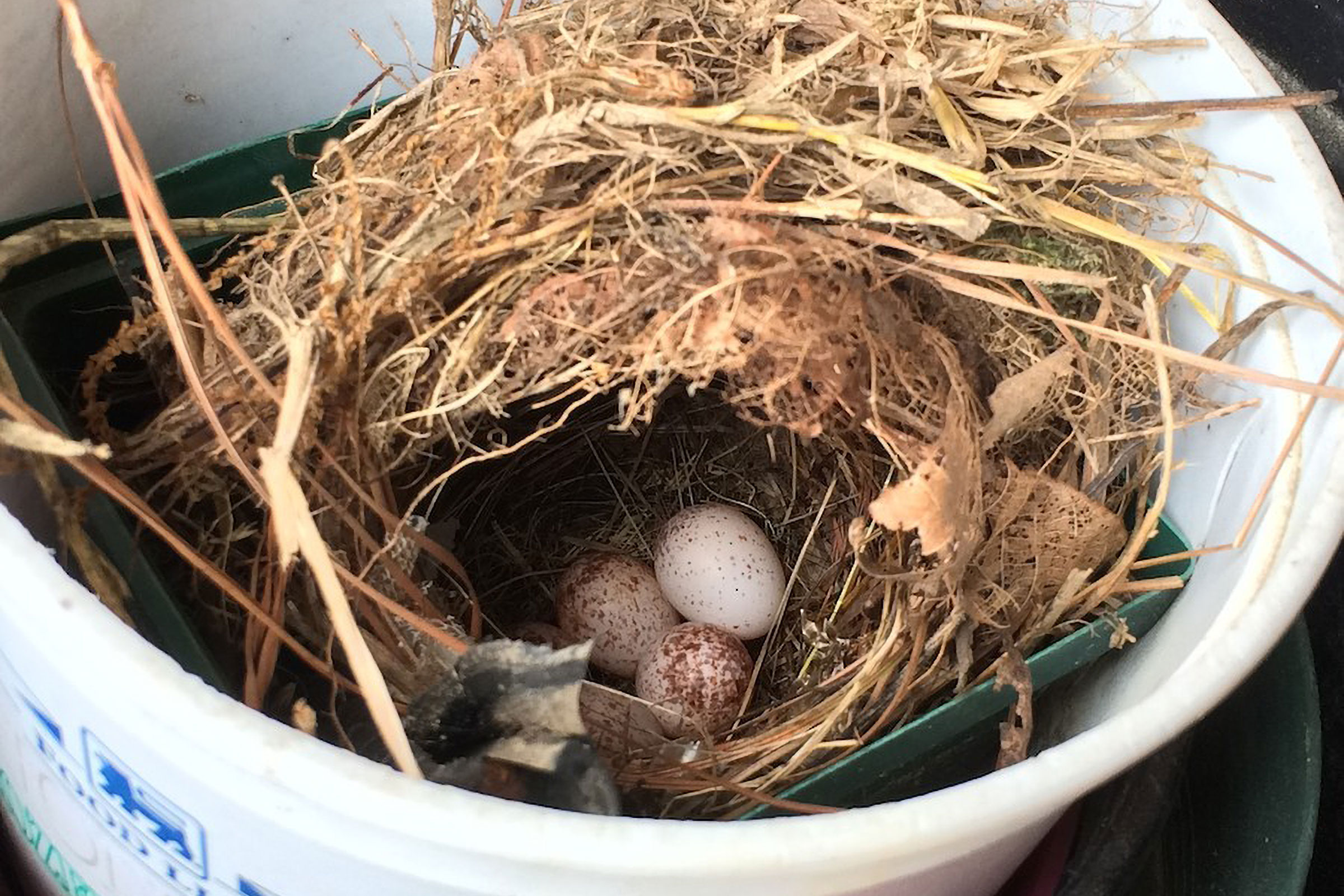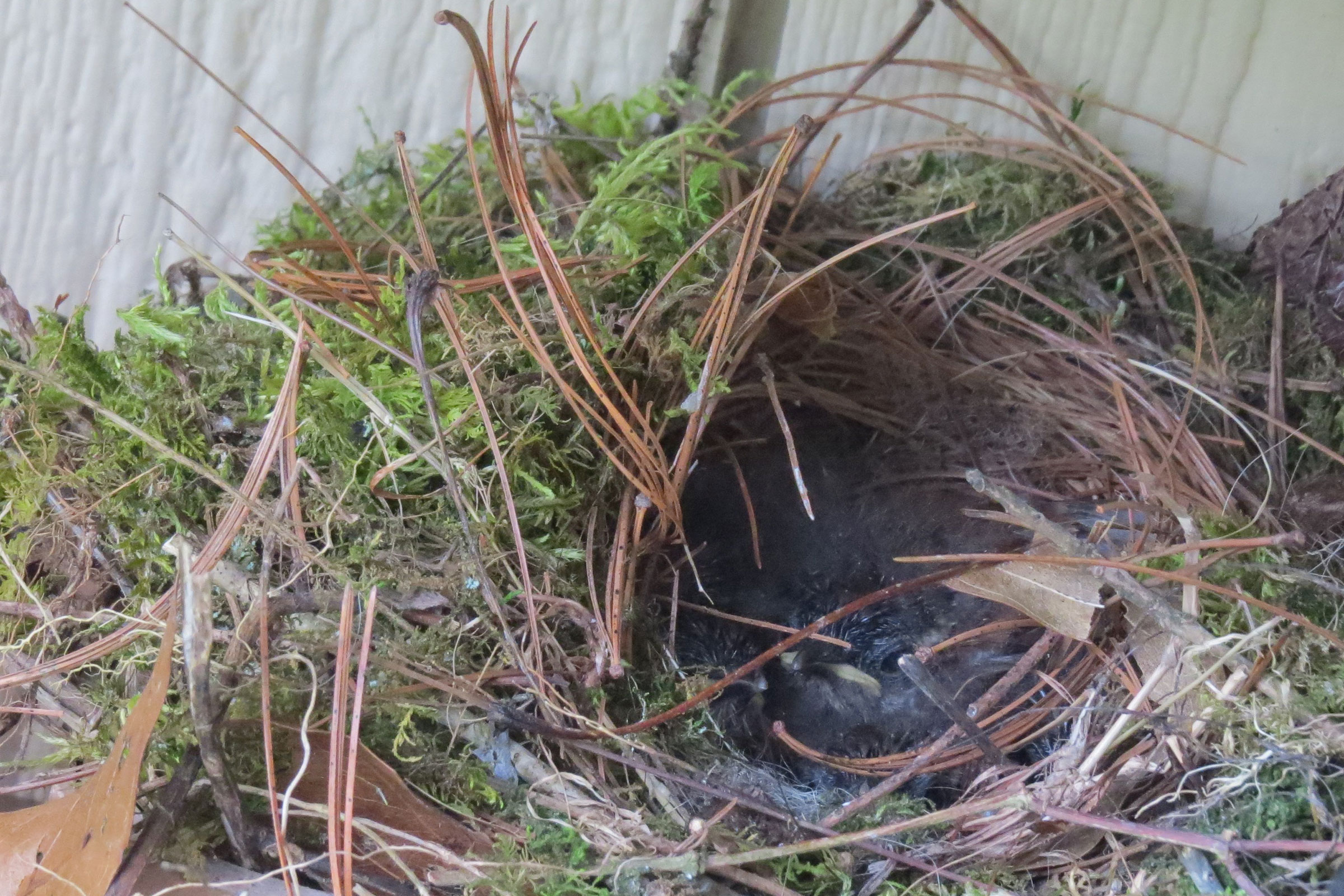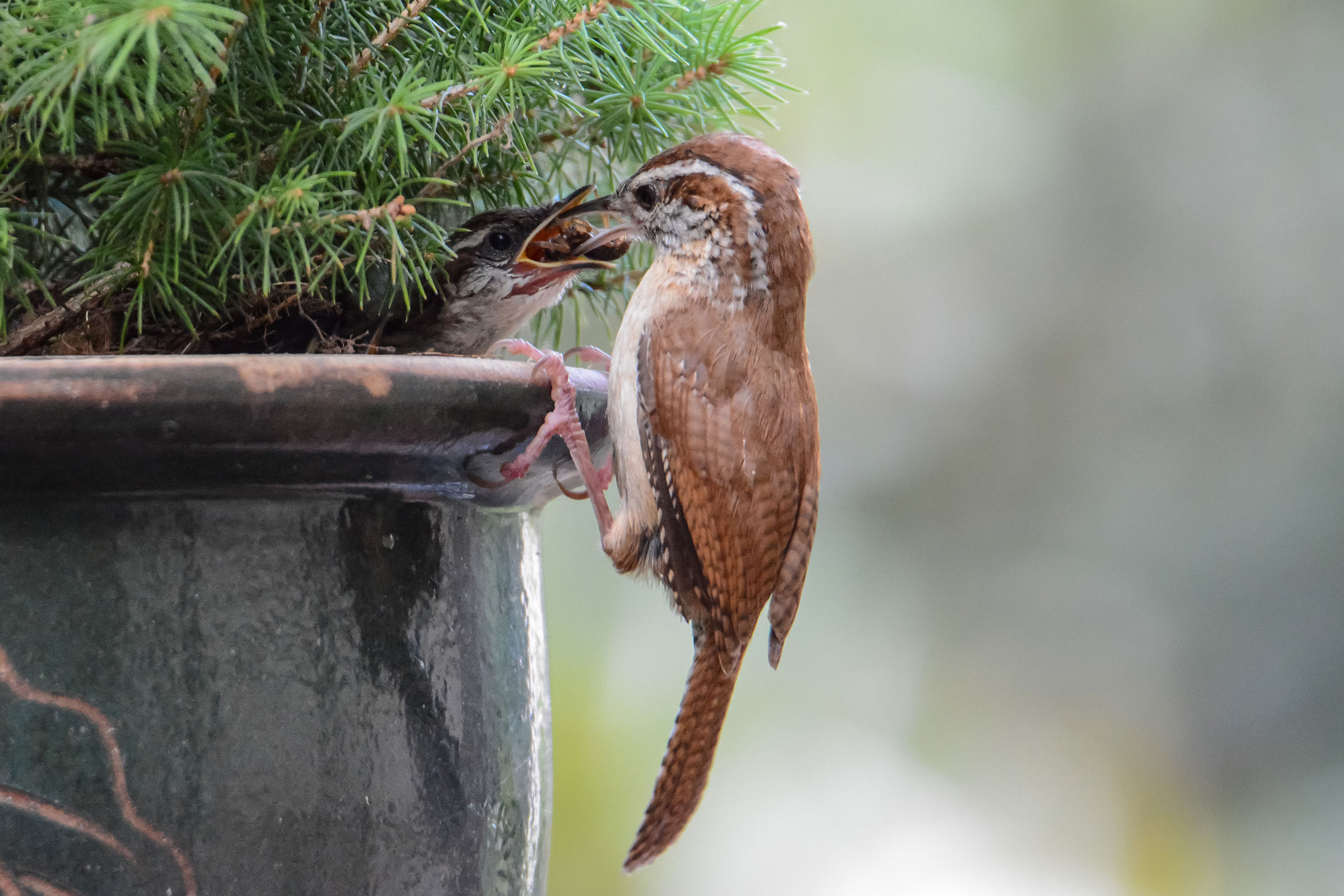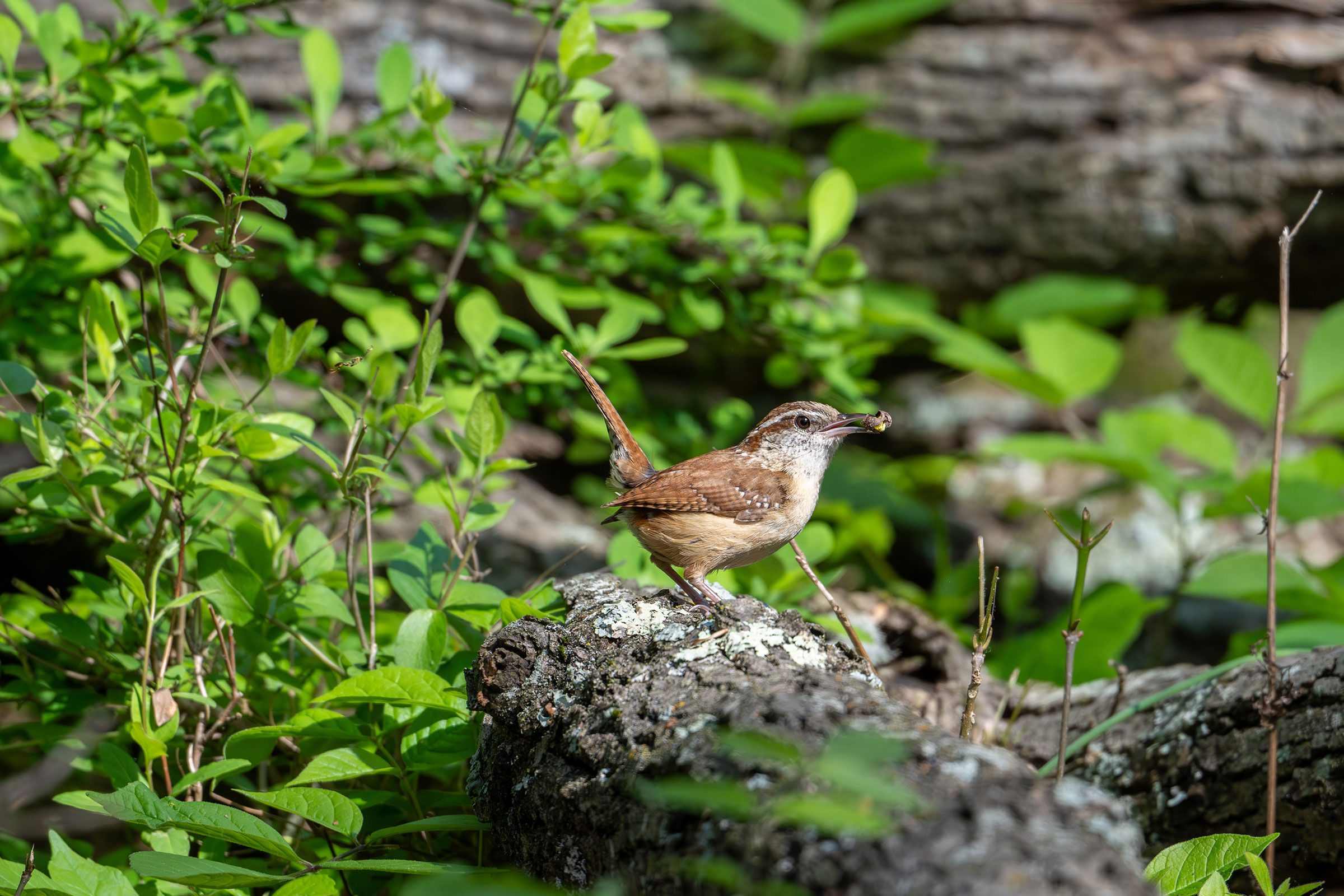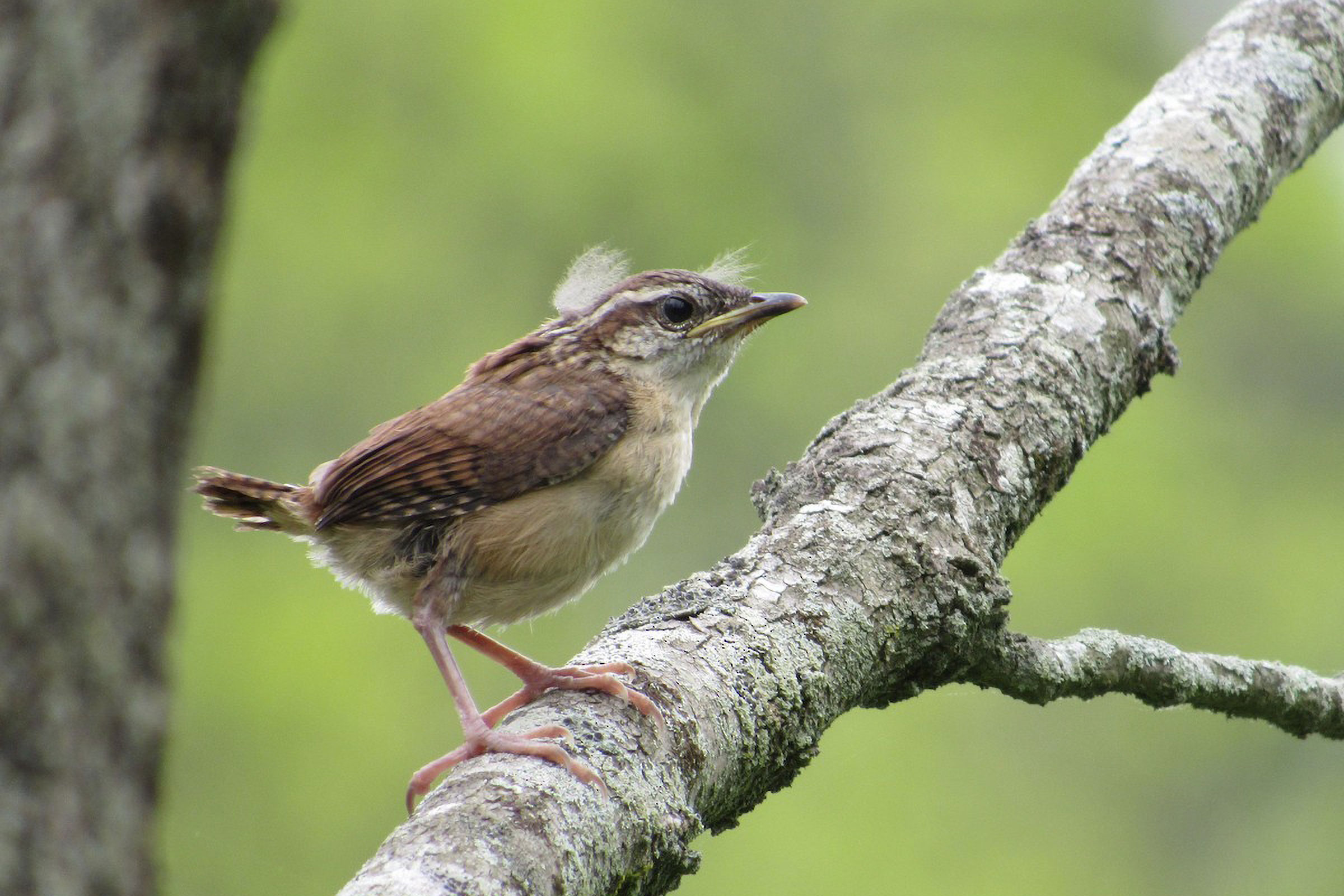Introduction
Occurring from forests to farms to urban areas, the Carolina Wren is among the most ubiquitous, abundant, and vocal breeding birds of Virginia. It sings its teakettle-teakettle from woodlots, backyards, and bushes during the summer. Living hand and wing with humans, Carolina Wrens regularly nest in mailboxes, flowerpots, old farm implements, the bumpers of parked vehicles, and any other semi-open space that offers modest protection (Haggerty and Morton 2020).
Breeding Distribution
Carolina Wrens are found throughout the state in a broad range of habitats and are generally highly likely to occur equally across all regions of the state (Figure 1). Their likelihood of occurrence is positively associated with the amount of forest edge habitat in a block.
Carolina Wren distribution during the First Atlas and its change between the two Atlas periods could not be modeled due to model limitations (see Interpreting Species Accounts). For more information on its distribution during the First Atlas, please see the Breeding Evidence section.

Figure 1: Carolina Wren breeding distribution based on probability of occurrence (Second Atlas, 2016–2020). This map indicates the probability that this species will occur in an Atlas block (an approximately 10 mi2 [26 km2] survey unit) based on environmental (including habitat) factors and after adjusting for the probability of detection (variation in survey effort among blocks).
Breeding Evidence
Carolina Wrens were confirmed breeders in 953 blocks and 125 counties and found to be probable breeders in an additional six counties, making them confirmed or probable breeders in all but two of the state’s 133 counties (Figure 2). While not corrected for survey effort, a pattern of frequent detection near human-dominated areas, such as Hampton Roads-Virginia Beach, Northern Virginia, and Richmond, was evident. Confirmations were documented throughout the entire state during the First Atlas as well (Figure 3).
Although recently fledged young were observed as early as January 9, most breeding was confirmed from early March through early October. Carolina Wren breeding was primarily confirmed through observations of recently fledged young (January 9 – October 7), occupied nests (February 27 – August 18) nests with young (March 16 – September 6), and adults carrying food (March 20 – September 29) (Figure 4).
For more general information on the breeding habits of this species, please refer to All About Birds.

Figure 2: Carolina Wren breeding observations from the Second Atlas (2016–2020). The colored boxes illustrate Atlas blocks (approximately 10 mi2 [26 km2] survey units) where the species was detected. The colors show the highest breeding category recorded in a block. The numbers within the colors in the legend correspond to the number of blocks with that breeding evidence category.
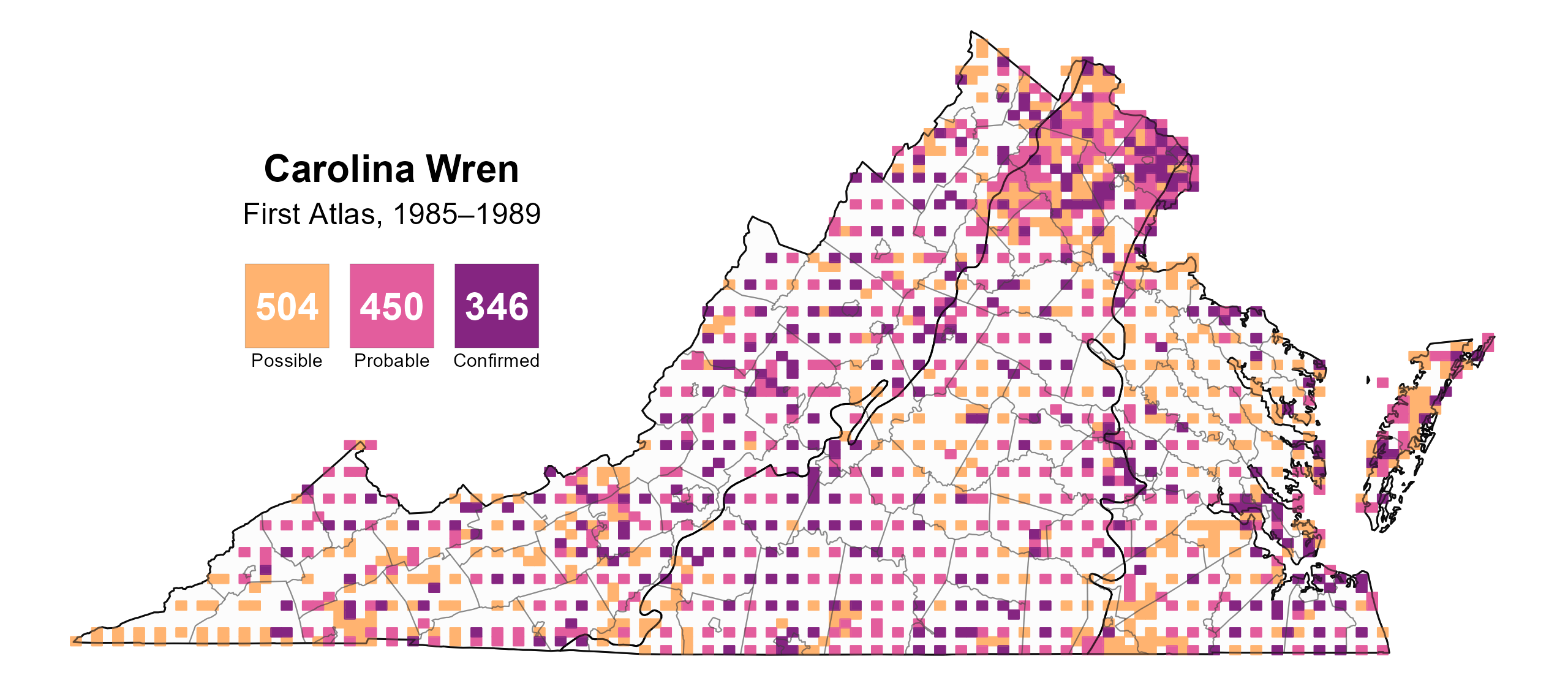
Figure 3: Carolina Wren breeding observations from the First Atlas (1985–1989). The colored boxes illustrate Atlas blocks (approximately 10 mi2 [26 km2] survey units) where the species was detected. The colors show the highest breeding category recorded in a block. The numbers within the colors in the legend correspond to the number of blocks with that breeding evidence category.

Figure 4: Carolina Wren phenology: confirmed breeding codes. This graph shows a timeline of confirmed breeding behaviors. Tick marks represent individual observations of the behavior.
Population Status
Carolina Wren relative abundance was estimated to be high throughout most of the Piedmont and northern Mountains and Valleys region and moderate the remainder of state, except in unsuitable habitats away from humans, such as coastal marshes and areas of intensive agriculture, where it was slightly lower (Figure 5).
The total estimated Carolina Wren population in the state is approximately 2,582,000 individuals (with a range between 1,688,000 and 3,962,000). This population estimate makes Carolina Wren the second most abundant breeding bird in the state (among those species for which abundance could be modeled). Based on the North American Breeding Bird Survey (BBS), the Carolina Wren population increased by a significant 3.18% annually from 1966–2022 in Virginia, and between Atlas periods, its population increased by a significant 1.71% % per year from 1987–2018 (Hostetler et al. 2023; Figure 6).

Figure 5: Carolina Wren relative abundance (Second Atlas, 2016–2020). This map indicates the predicted abundance of this species at a 0.4 mi2 (1 km2) scale based on environmental (including habitat) factors. Abundance values are presented on a relative scale of low to high.

Figure 6: Carolina Wren population trend for Virginia as estimated by the North American Breeding Bird Survey. The vertical axis shows species abundance; the horizontal axis shows the year. The solid line indicates the estimated population trend; there is a 97.5% probability that the true population trend falls between the dashed lines. The shaded bars indicate the First and Second Atlas periods.
Conservation
Carolina Wrens are common and widespread throughout Virginia and are not considered a species of special concern. No specific conservation projects are underway in Virginia.
Interactive Map
The interactive map contains up to six Atlas layers (probability of occurrence for the First and Second Atlases, change in probability of occurrence between Atlases, breeding evidence for the First and Second Atlases, and abundance for the Second Atlas) that can be viewed one at a time. To view an Atlas map layer, mouse over the layer box in the upper left. County lines and physiographic regional boundaries (Mountains and Valleys, Piedmont, and Coastal Plain) can be turned on and off by checking or unchecking the box below the layer box. Within the map window, users can hover on a block to see its value for each layer and pan and zoom to see roads, towns, and other features of interest that are visible beneath a selected layer.
View Interactive Map in Full Screen
References
Haggerty, T. M., and E. S. Morton (2020). Carolina Wren (Thryothorus ludovicianus), version 1.0. In Birds of the World (A. F. Poole, Editor). Cornell Lab of Ornithology, Ithaca, NY, USA. https://doi.org/10.2173/bow.carwre.01.
Hostetler, J. A., J. R. Sauer, J. E. Hines, D. Ziolkowski, and M. Lutmerding (2023). The North American breeding bird survey, analysis results 1966–2022. U.S. Geological Survey, Laurel, MD, USA. https://doi.org/10.5066/P9SC7T11.


